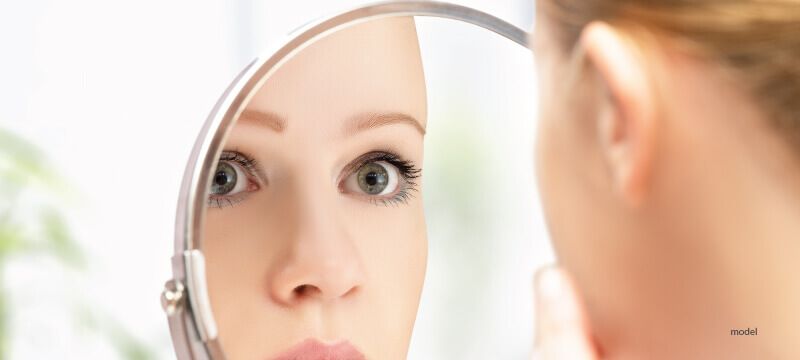Skin Strategy: How To Safely Test New Skin Care Products

With the array of skin care products available on the market, each promising its own miraculous results, it’s easy to feel overwhelmed. Moreover, what works wonders for one person might cause a breakout for another. The variation in effectiveness stems from differences in skin types, sensitivities, and individual reactions to ingredients. Navigating the skin care landscape requires a cautious approach to testing new products to ensure they benefit rather than harm your skin.
1. Use the Same “Test Spot” for at Least Seven Days
To gauge a new skin care product’s compatibility with your skin, apply it to the same spot consistently for at least seven days. Start by applying the product to a small area of skin, such as behind your ear or on your forearm, twice a day. By using the same spot, you can monitor for any adverse reactions, such as redness, itching, or breakouts. This method helps to isolate the product’s effects, making it easier to determine if it is suitable for your skin. In many cases, reactions can be delayed, only becoming apparent after several days of consistent use, so patience is key.
2. Check the Ingredients for Irritants
Understanding the ingredients in your skincare products is crucial, especially if you have sensitive skin. Some common ingredients, like retinol, glycolic acid, and certain preservatives, can cause irritation. Retinol, for instance, is a powerful anti-aging ingredient but can cause peeling and redness in some users. Glycolic acid, an alpha-hydroxy acid (AHA), is effective for exfoliation but can be too harsh for those with sensitive skin. By carefully reading labels and avoiding known irritants, you can narrow down your options and find products less likely to cause adverse reactions. For those unsure about specific ingredients, resources like the EWG’s Skin Deep database provide detailed information on various cosmetic ingredients.
3. Keep the Product on for a Normal Amount of Time
When testing a new skincare product, it’s important to use it as you would in your regular routine. Some people might be tempted to wash off a new product quickly to prevent potential irritation, but this doesn’t provide an accurate test of its effects. For example, if you normally leave a moisturizer on all day, you should do the same during the testing period. This approach ensures that you are testing the product under realistic conditions, allowing you to see how it interacts with your skin over time.
4. Avoid Any Product That Causes a Reaction
If a new skincare product causes a visible reaction, such as redness, swelling, or a rash, you should stop using it immediately. Wash off the product with lukewarm water and avoid applying any other products to the affected area. Home remedies like petroleum jelly can help soothe irritated skin, and a cold compress can reduce swelling and discomfort. However, if the reaction is severe or persistent, seeking advice from a dermatologist is essential. Allergic reactions can escalate quickly, and a dermatologist can provide targeted treatments to prevent further complications.
When To Seek Professional Care for Your Skin
While many skin issues can be managed with over-the-counter products, some conditions require professional intervention. Consulting a dermatologist can provide more effective treatments and prevent long-term damage. Here are some common reasons to seek professional care:
Acne
Acne is one of the most prevalent skin conditions, affecting millions of people worldwide. While over-the-counter treatments can be effective for mild cases, stubborn acne often requires professional care. Dermatologists can prescribe topical treatments like retinoids or oral medications such as antibiotics or isotretinoin. In some cases, procedures like chemical peels or laser therapy may be recommended to reduce acne and improve skin texture.
Frown Lines
Frown lines, or glabellar lines, are a common concern as skin ages. While many over-the-counter products claim to reduce these lines, their effectiveness is often limited. Dermatologists can offer more potent solutions, such as Botox injections, which temporarily paralyze the underlying muscles and smooth the skin. Dermal fillers can also be used to plump up the skin and reduce the appearance of lines.
Hyperhidrosis
Hyperhidrosis, or excessive sweating, can be a frustrating condition that is not fully addressed by over-the-counter products. Clinical strength deodorants can help manage symptoms, but they often don’t treat the root cause. Dermatologists have several options for treating hyperhidrosis, including prescription antiperspirants, oral medications, and in some cases, Botox injections to block the nerves responsible for excessive sweating.
Psoriasis
Psoriasis is a chronic autoimmune condition characterized by red, scaly patches on the skin. While over-the-counter treatments like moisturizers and hydrocortisone creams can help relieve mild symptoms, professional treatment is often necessary for more severe cases. Dermatologists can prescribe topical treatments, light therapy, or systemic medications that target the underlying immune response, helping to control flare-ups and maintain skin health.
Finding the right skincare product can be a journey of trial and error, but by following these strategic testing practices, you can make informed choices that benefit your skin. Always be mindful of how your skin reacts, and don’t hesitate to seek professional advice when needed. Your skin deserves the best care, and a thoughtful approach can help you achieve a healthy, glowing complexion.
Disclaimer: The contents of the Westlake Dermatology website, including text, graphics, and images, are for informational purposes only and are not intended to substitute for direct medical advice from your physician or other qualified professional.
